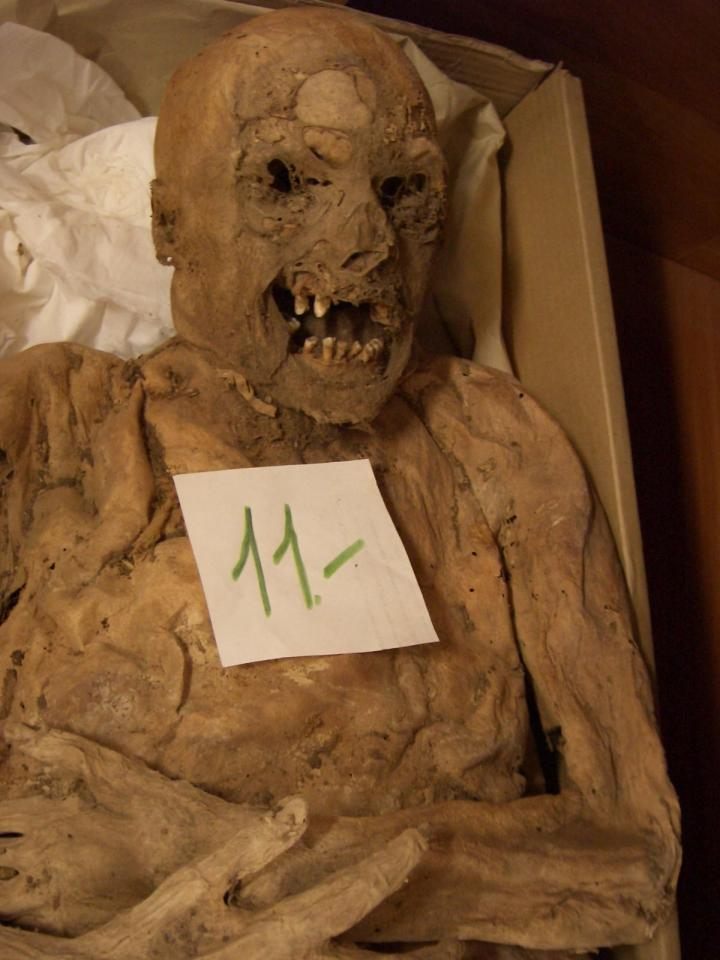Found: A Hungarian Mummy With the Gene for Colon Cancer
Humans were predisposed to the disease even before it became common.

A mummy found with the gene. (Photo: Tel Aviv University)
Back in 18th century Hungary, colon cancer wasn’t really a problem that people worried about. It’s one of those diseases that’s become more common as people have lived longer, cushier lives–it’s associated with eating processed food and spending too much time lazing around. But it also has a genetic component, and a team of scientists from Tel Aviv University wanted to know which came first: the gene or the disease?
Enter an 18th century Hungarian mummy. In the town of Vác, Hungary, just a short distance north of Budapest, there’s a crypt that happened to have the perfect conditions for natural mummification. It’s dry, cool, and consistently ventilated, and the corpses of 260-odd people who were buried there from 1731 to 1831 were discovered, in 1995, to have turned into mummies.
During the mummification process, some of the bodies’ soft flesh was preserved. The Israeli researchers analyzed genetic samples from 20 of those mummies, looking for the gene that predisposes people to get colon cancer. And, in one case, they found it, they report in PLOS ONE.
It’s hard to draw big conclusions from just one instance of the gene, but it does indicate that a genetic predisposition to colon cancer may have preexisted the modern-day conditions that promote it.
Bonus finds: A man mummified in his own yacht, oldest fossilized nervous system ever found
Every day, we highlight one newly lost or found object, curiosity or wonder. Discover something unusual or amazing? Tell us about it! Send your finds to sarah.laskow@atlasobscura.com.







Follow us on Twitter to get the latest on the world's hidden wonders.
Like us on Facebook to get the latest on the world's hidden wonders.
Follow us on Twitter Like us on Facebook